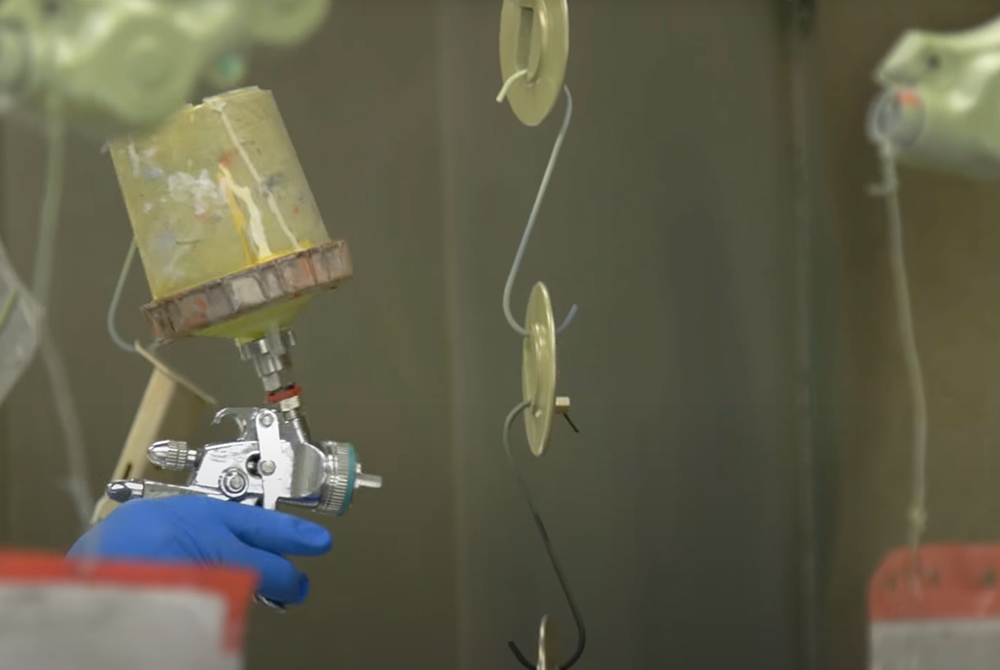ESG Report
Products Overview
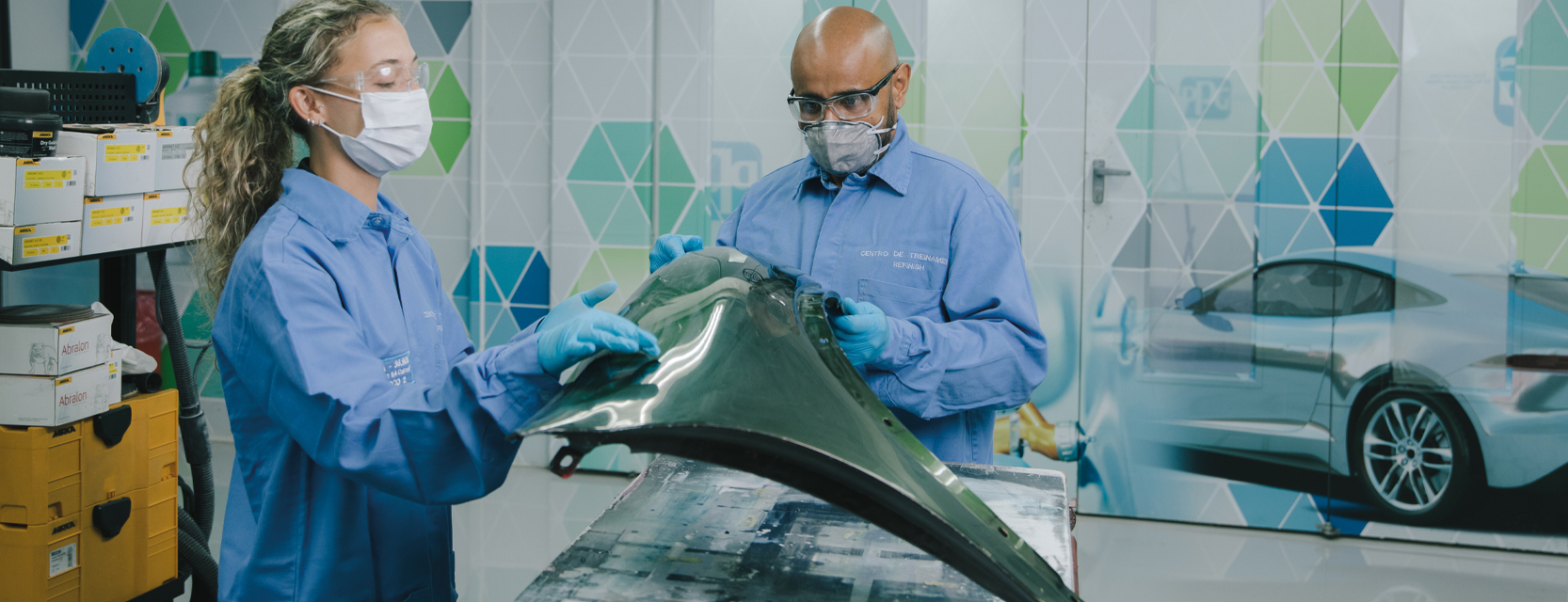
We use a structured and disciplined approach to develop sustainable and safe products and processes
PPG's purpose to protect and beautify the world drives our approach to developing sustainable solutions and offering unique technologies to customers in a wide range of markets and geographic locations. We manufacture paints, coatings and specialty materials that extend the useful life of products and help our customers reduce energy usage and emissions, protect all people that use or apply our products, and minimize waste and water consumption.
And we have set an ambitious goal for ourselves: We want 40% of our sales to come from sustainably advantaged products and processes by 2025.
In 2021, we continued to improve our stewardship processes to identify and reconsider the use of certain substances in our products.
In addition to implementing this new methodology to help better determine the sustainable benefits of our products, we also introduced new sustainably advantaged products in 2021 that will help our customers meet their sustainability goals. Furthermore, our new product methodology will provide substantiation for consumers to make buying decisions based on sustainable attributes. And to ensure we continue to build our pipeline of innovation, we expanded our partnerships with government and academic institutions.
Our efforts to improve the safety and sustainability of our products support our ability to contribute to several UN Sustainable Development Goals (SDGs), including 3 (Health and Well-being), 6 (Clean Water and Sanitation), 7 (Clean Energy), 9 (Industry, Innovation and Infrastructure), 12 (Sustainable Consumption) and 13 (Climate Action). As outlined overleaf, we have also begun to assess the value contribution of PPG solutions towards the SDGs.
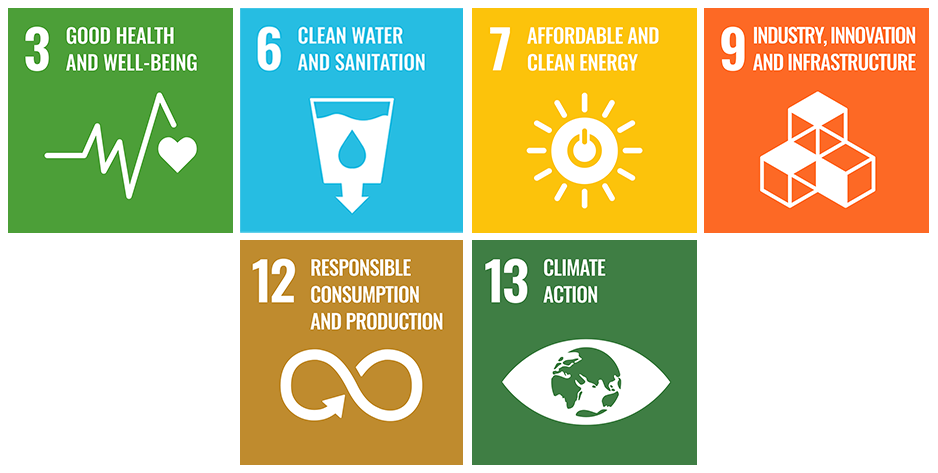
Game-changing products and innovation
Today, from smart coatings that absorb pollution to heat-reflecting technology borrowed from eggplant biology, we make coatings that are transforming everything—from the places in which we work to the vehicles we drive.
A few snapshots from our journey creating gamechanging products follow.
A timeline of select innovation
Electrocoat reduces waste and energy use in the automotive industry and beyond
Opposites do attract. And when they do, a little paint and energy can go a long way.
In 1961, we developed a new technology called electrocoating (Ecoat). Today, Ecoat is considered the gold standard in automotive OEM paint shops around the world, protecting more than 800 million vehicles and counting.
Ecoat uses electrical current to deposit charged paint particles onto an oppositely charged part submerged in a water-based solution. The amount of electricity flowing through the tank tightly controls how much paint is deposited, resulting in reduced product waste.
Ultrafiltration can recover more than 98% of the paint that is carried out of the tank and into the rinse stages. Ecoat technology also provides superior salt spray, humidity and corrosion resistance, and a smooth, defect-free film that enables world-class topcoat finishes.
Since the introduction of Ecoat for the automotive industry, we've refined and expanded this offering to other customers, including those in the industrial and aerospace industries.
Waterborne refinish system opens the door for the automotive refinish industry to go greener
Our automotive refinish and OEM customers need solutions that support their need to comply with low volatile organic compound (VOC) regulations—all without sacrificing performance.
In 1986, PPG introduced the industry's first waterborne refinish system for vehicles. Since then, we’ve introduced several systems that outperform traditional solvent-borne options while delivering sustainability benefits. Refinish waterborne systems, which include the PPG ENVIROBASE®, PPG NEXA AUTOCOLOR® and PPG AQUABASE® systems, replace solvents found in traditional basecoats with water, decreasing odor and improving air quality in the work environment.
For example, PPG Envirobase improves facility air quality by reducing VOCs by 80% compared to solvent-borne paints, all while delivering superior color accuracy and durability.
Compact process B1:B2™ reduces energy consumption up to 50%, emissions up to 35%
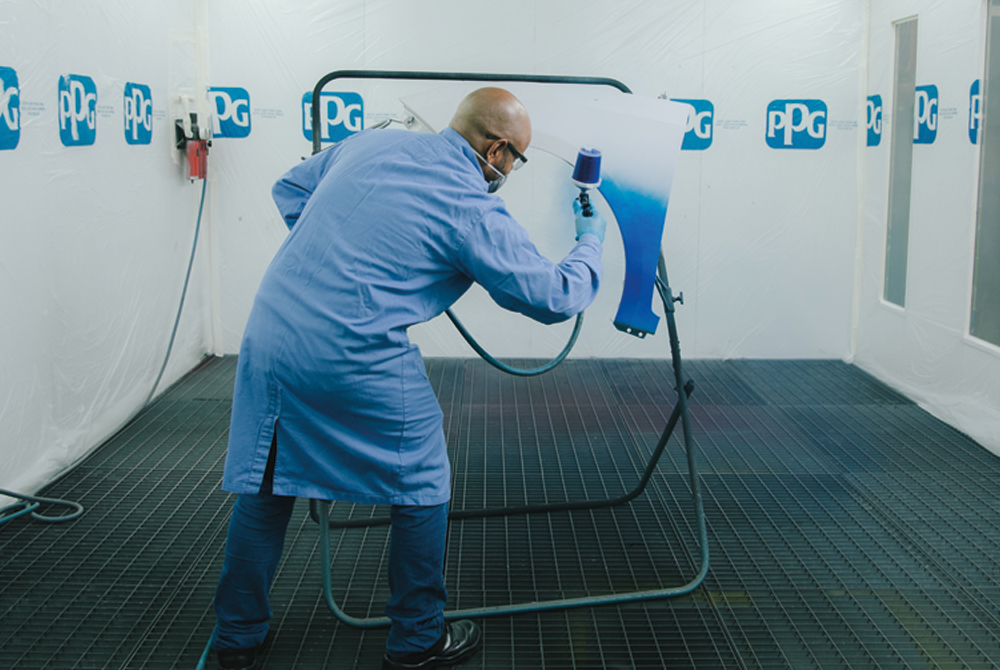
In 2006, we introduced our B1:B2 process, revolutionizing the traditional automotive paint process.
In the traditional automotive paint process, the application of pretreatment and Ecoat is followed by a primer layer. After the primer layer is cured, a topcoat layer of basecoat and clearcoat is applied and cured.
We were the first to introduce a B1:B2 Compact Paint System, which moves the traditional primer application into the topcoat booth, eliminating the dedicated primer booth and all related processing. The B1 layer provides primer, filling, anti-chip and durability benefits. The B2 layer provides color and additional durability. Both the B1 and B2 layers are applied wet-on-wet and do not require a baking or heated dehydration process in between.
The system reduces a paint shop's energy consumption – which is typically among the highest areas of energy consumption in an auto manufacturing plant – by up to 50% and its carbon footprint by 35%, while simultaneously improving efficiency.
Rethinking coatings in the aerospace industry to support sustainability commitments
Over the last several decades, PPG has continued to introduce new innovations that are helping the aerospace industry improve performance and sustainability.
In 2007, we delivered the industry's first electrochromic passenger and door windows. First used on the Boeing 787 Dreamliner, the windows allow passengers to electronically shade their windows, cooling the cabin and reducing the amount of air conditioning needed, ultimately lowering fuel consumption and increasing energy efficiency.
In addition, leveraging technology originally developed for our OEM customers, PPG introduced the first electrocoat in the aerospace industry. The PPG AEROCRON® electrocoat primer offers customers the sustainable benefits of being a non-chrome product with virtually 100% material utilization.
PPG Aerocron Electrocoat Primer
Watch VideoCase Study: Aerospace Impact
Through our suite of products and technologies, we are contributing to the aerospace industry's net zero journey.
Lighter, faster and cooler: Rethinking coatings in the aerospace industry and supporting net-zero commitments
Industry challenge
In 2021, International Air Transport Association (IATA) members committed to achieve net-zero carbon emissions by 2050. Reaching this goal requires targeting causes of excess fuel and energy use, which can be exacerbated by wind resistance, weight and heat.
PPG innovations
Numerous PPG innovations are helping the airline industry reduce aircraft weight and energy use to help reach its goal of net-zero greenhouse gas emissions. A few include:
- Our first-to-market heat-management system exterior coating, which reduces air conditioning use and related energy. The exterior skin remains up to 25° F cooler and the interior cabin temperatures are reduced five to seven degrees.
- Electrochromic windows: In 2007, we delivered the industry's first electrochromic passenger and door windows. First used on the Boeing 787 Dreamliner, the windows allow passengers to electronically shade their windows, cooling the cabin and eliminating the weight of traditional plastic shades.
- Structurally loaded composite cockpit windows: transparencies that do not require a frame and therefore reduce aircraft weight by an average of 9%.
- PPG OPTICOR® advanced transparency material: Optically transparent, the material can be cast in a wide range of thicknesses and shapes to reduce aerodynamic drag and improve aircraft aerodynamic performance.
- PPG DESOTHANE® HD/CA 9008 basecoat/clearcoat system: This coating system offers improved durability, faster processing times and weight savings for reduced energy and fuel consumption.
- PPG AEROCRON® electrocoat primer, the first in the aerospace industry, offers faster processing times, reduced cost compared to existing spray applied primers, and weight savings for reduced energy and fuel consumption, all while being a waterborne, low-VOC coating.
Impact
Total solar reflectance for darker colors typically increased from 5% to 30% with solar heat management coatings.
SDGs impacted
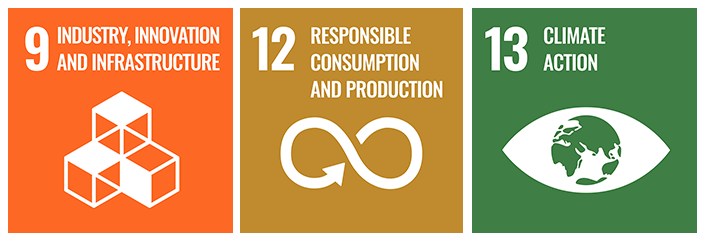
Read more about how we are helping our aerospace customers meet their sustainability goals.
How We Do It
Our approach to developing safe and sustainably advantaged products and processes is built upon more than a century of research and development and rooted in environmental and product stewardship.
In 2021, we continued to expand our efforts to incorporate safety and sustainability into product development, bringing a more holistic and systematic approach to processes we've built over the last several years. We also created several new positions within our dedicated sustainability organization led by our newly appointed vice president of global sustainability, including customer sustainability business partner roles, responsible for working with commercial, product management and technical functions to explore areas of innovation that drive increased sustainability benefits for PPG's customers, products and services.
Sustainably advantaged products
A central aspect of our product development process is considering how we produce and what we produce. How we produce our products impacts our sustainability goals. What we produce impacts the sustainability goals of our customers and the sustainable benefits of the end product.
Learn more about our latest sustainably advantaged products.
Partnerships for innovation and research
From automotive to aerospace, we invest in partnerships that are revolutionizing coatings and making our products and our customers' products safer, stronger and more sustainable. We partner with customers, suppliers, academic institutions and other public and private entities to advance sustainable initiatives and technologies.
In 2021, we partnered with several government agencies and academic institutions on products that improve safety, reduce weight and fuel use, and protect mission-critical equipment and vehicles under extreme conditions.
Learn more about how we are working with organizations from all sectors to create new and more sustainable innovations.
Product stewardship
We take responsibility for minimizing the human health and environmental impacts of our products throughout their entire life cycle. We actively seek to avoid using chemicals of concern in new products, and we have been successful in removing these substances from many existing products through reformulation. We publicly communicate transparent and comparable information about our products, including through independently verified life-cycle assessments (LCAs), validated environmental product declarations (EPD) and health product declarations (HPDs).
In 2021, we continued to improve our product stewardship processes and systems. This includes enhancements to our Product Stewardship Management System and review and audit processes based on extensive benchmarking. We also introduced a new system, the Emerging Issues (EI) tool, to stay up to data on compliance and other regulatory issues.
Learn more about how we are addressing the health and environmental impacts of our products.


